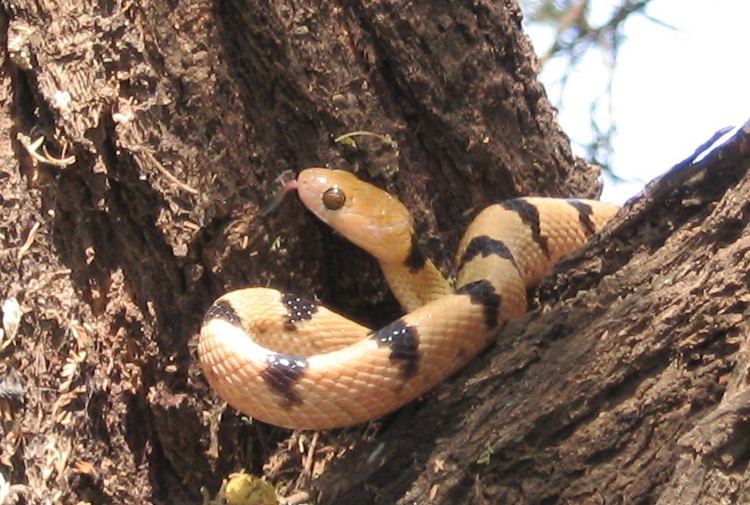Subphylum Vertebrata | Phylum Chordata Class Reptilia Suborder Serpentes | |
 | ||
Telescopus, the Old World catsnakes, is a genus of 12 species of mildly venomous opisthoglyphous snakes in the Colubridae family.
Contents
Geographic range
They are found from the Balkans and Pakistan through to southern and western Africa, plus two species in northern Eurasia.
Description
The genus is characterised by having a slender slightly flattened cylindrical body and attaining a total length (including tail) of between 80–180 cm (about 2½-6 feet). They have medium-large eyes with vertical pupils, a typical feature of nocturnal reptiles, and have smooth dorsal scales. The dentition of the genus is as follows; typically 10–12 maxillary teeth, with a space before a pair of grooved fangs at the rear of the mouth, approximately level with the eyes. The anterior mandibular teeth are usually longer than the posterior mandibular teeth, perhaps to aid the arboreal species in catching and holding prey whilst in trees. The species are mostly drab, spotted snakes, but include the spectacular tiger snake (T. semiannulatus), which is orange in color with black saddles along its back.
Habitat and Behavoiur
This genus Telescopus includes both arboreal and terrestrial species, and can be found from sea level up to 2,000 metres (about 6,600 feet) above sea level. They are nocturnal hunting snakes with a distinct head and large eyes.
Diet
The primary prey species are small lizards, including geckos, although some members of the genus may occasionally prey on small birds, rodents and amphibians.
Reproduction
All species in the genus are oviparous, laying clutches of 5-15 eggs.
Venom
All species in the Telescopus genus are venomous, with the venom being of a neurotoxic nature, however they are not considered particularly harmful to man. This is because the opisthoglyphous venom-delivery system is not as efficient as the delivery systems found in Elapids and Viperidae. However, some members of the Telescopus genus such as T. dhara have particularly large venom glands, and the venom toxicity in some species has been compared to that of the Acanthophis species. For these reasons it is advisable that all Telescopus species be handled with caution. It is also important to consider that allergic reactions are possible after a bite, and such a reaction would significantly worsen the effects of an envenomation.
